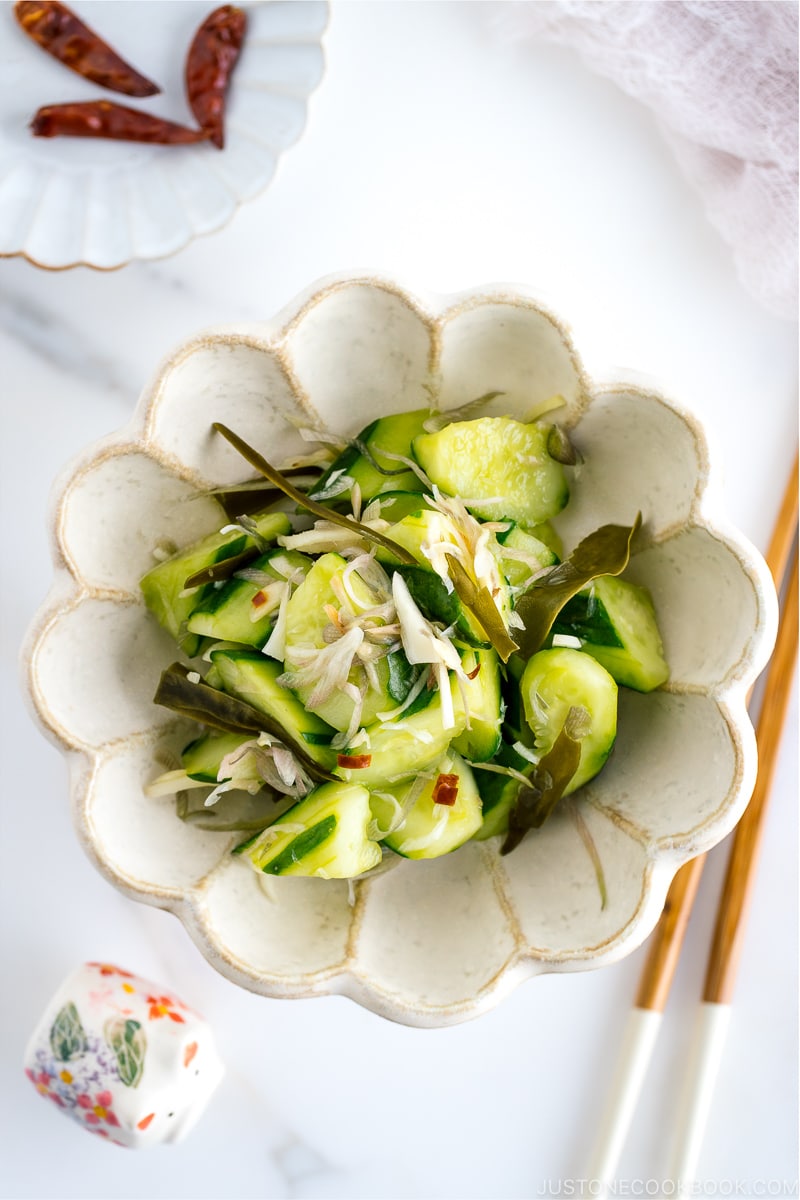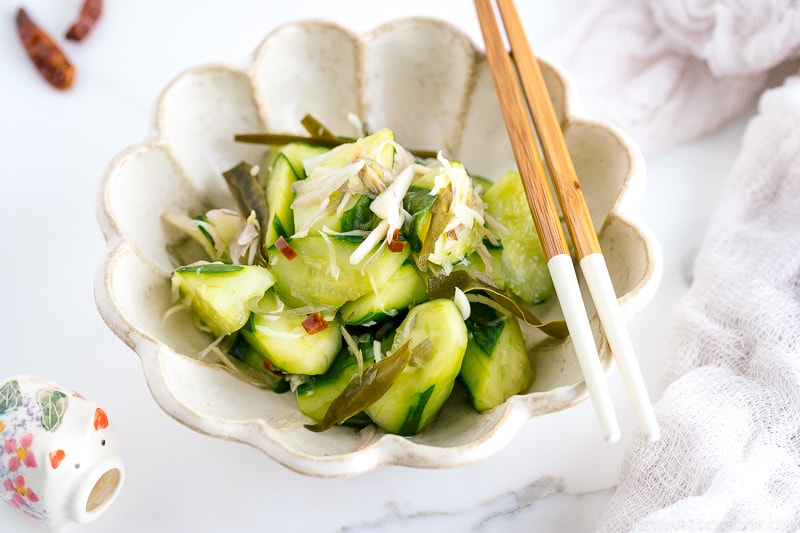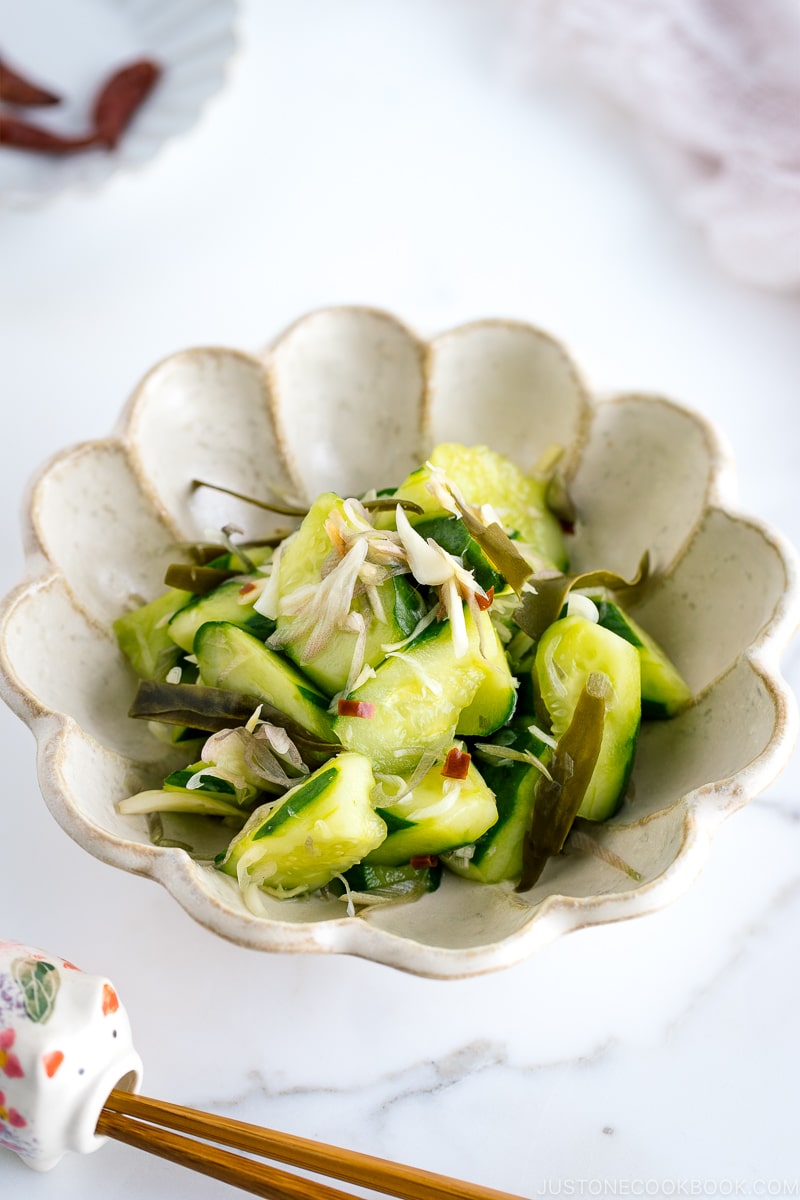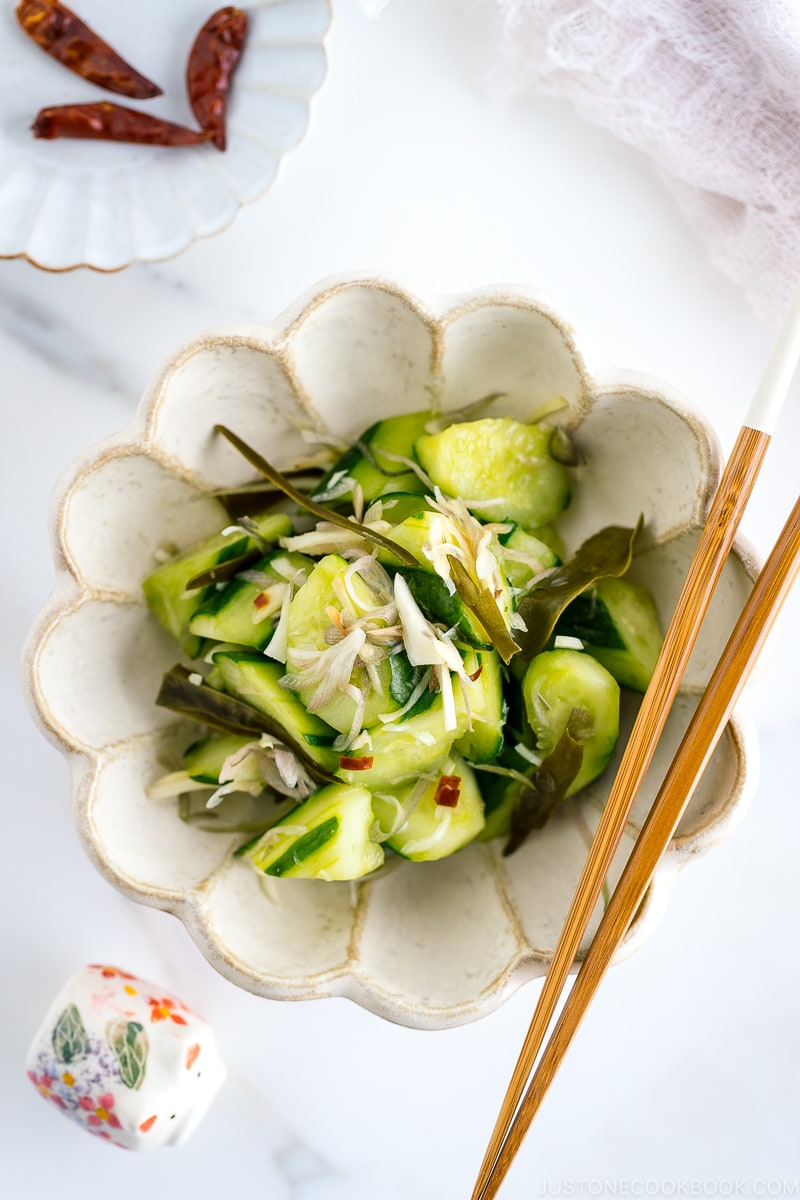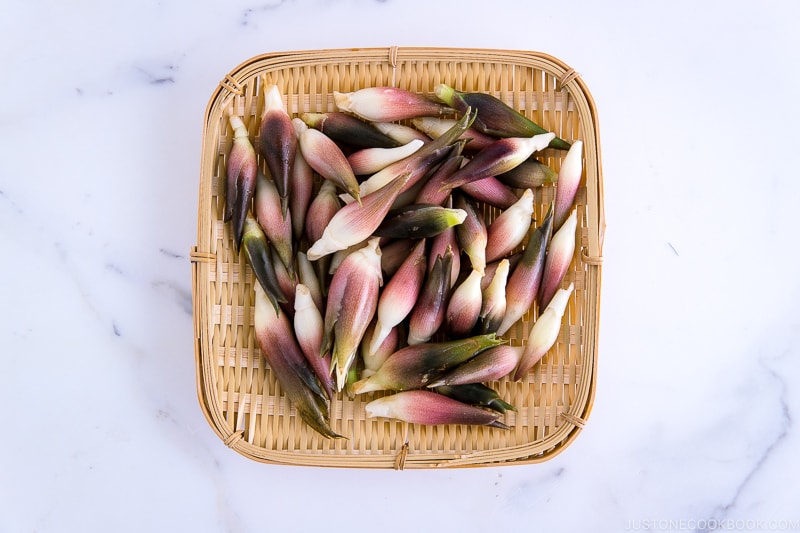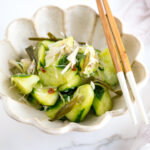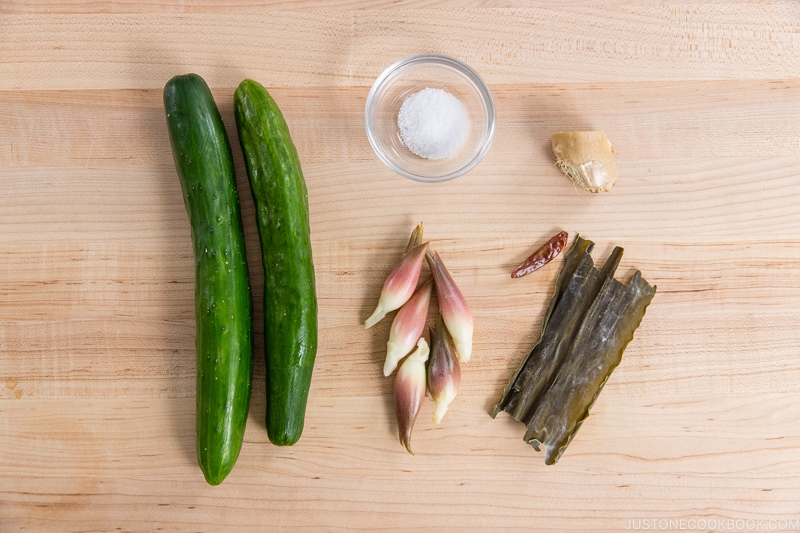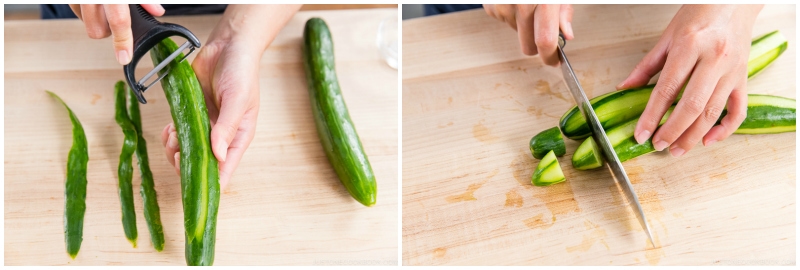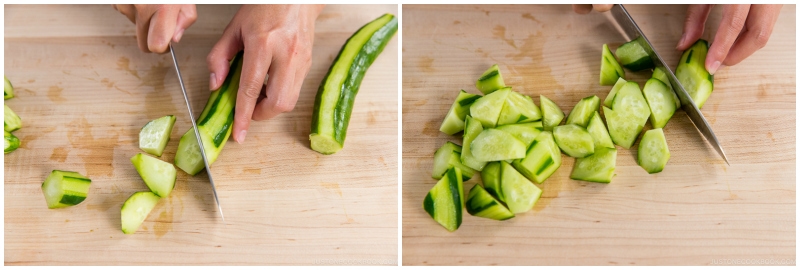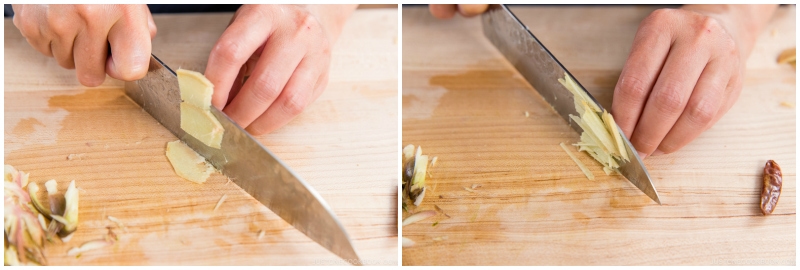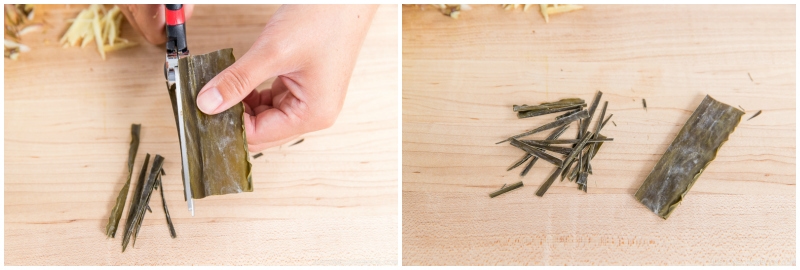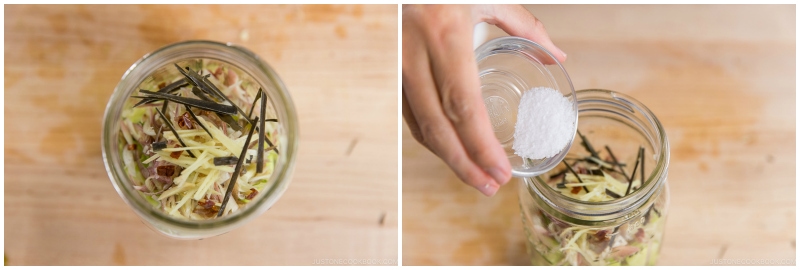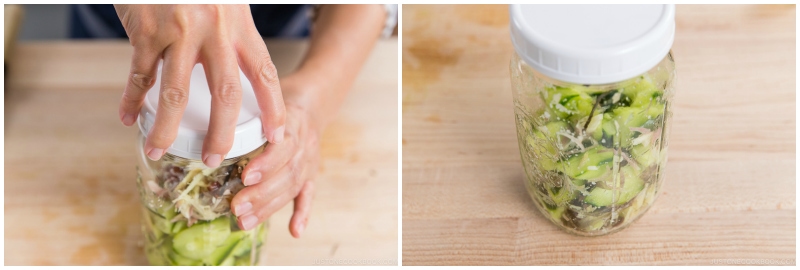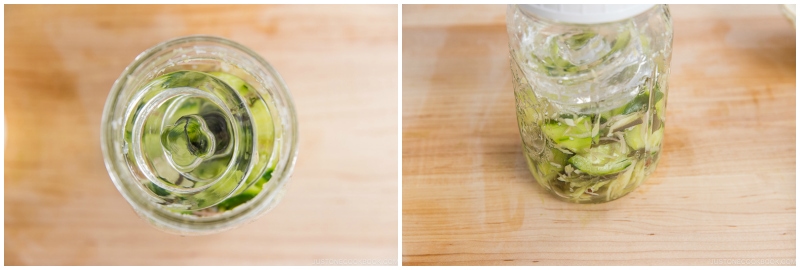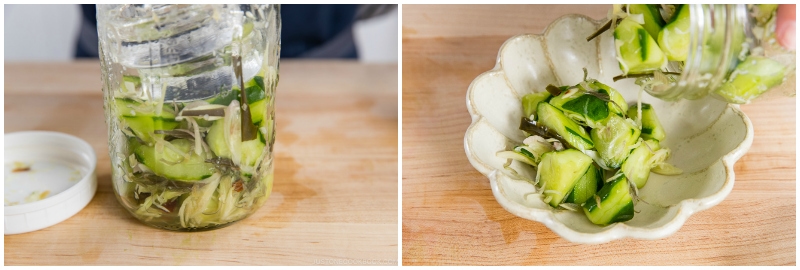I’ve shared different variations of pickled cucumbers here on the website, but we always have room for another possibility, right? Cucumbers are budget-friendly, and delicious, and the shelf life prolongs once pickled! This Pickled Cucumbers and Myoga (きゅうりとミョウガの浅漬け) is one that you can make quickly and efficiently. Within hours, the pickles will be ready for you to enjoy!
Why You Should Make Pickled Cucumbers and Myoga
For home gardeners, cucumbers are easy to grow and come in abundance. It’s a brilliant solution for preserving your summer harvest. Cucumbers are economical, even when you have to purchase them from the store. Use simple ingredients, totally customizable. Super quick to prepare! Who can resist this healthy, refreshing, crunchy dish?!
Asazuke – Japanese Quick Pickles
Japanese pickles are a bit different from Western pickles. In Japan, we make a lot of Asazuke (浅漬け), which can translate into “quick pickles” in English. These pickles are not intended to keep for a long time but rather for casual eating over the course of a couple of days or so. Vegetables are “pickled” or dressed in the pickling solution for a few hours. Some tender vegetables can be ready to serve as early as 30 minutes of pickling time. The best part is that the taste of the pickling solution is not too sour or salty like Western pickles or traditional Japanese pickles (Tsukemono). Asazuke is very much like a jazzed-up version of a salad. They have the right amount of tang yet still taste amazingly fresh and crunchy.
Tips on Making Pickled Cucumbers and Myoga
Even though it’s an easy pickle to make for all levels of cooks, I think I can share a few tips to make this dish better.
Cut the cucumbers into rangiri (乱切り) – Rangigi is the Japanese cutting style, which creates more surface to absorb flavors. It’s basically cutting the cucumber into angles while rotating it. We use this cutting technique for carrots in Japanese curry or Nikujaga (Meat and Potato Stew). Cut kombu into strips – To extract the umami essence from the kombu, I recommend cutting it into strips (some kombu is harder to cut than others). There are so many different types of kombu (Read our post), and some packages may not provide any information on the kombu type (usually lower grade). Do we need to add kombu? Well, kombu may not look important, but it’s an umami-packed ingredient, so you wouldn’t want to skip it. Add a bit of spice with a dried red chili – You will notice many Japanese recipes would ask you to remove the seeds from the dried red chili. That’s because we can’t tolerate the heat. But if you love the spice, add the seeds and maybe increase the amount of red chili. For most Japanese recipes, one red chili is standard (and without seeds!).
What is Myoga & Where to Find It
Myoga is sometimes called myoga ginger or Japanese ginger. This unique plant is harvested for its unopened flower bud and flavorful shoot instead of its root. It has a very distinctive flavor, with a mild ginger overtone. In the summertime, we believe that eating myoga can help to revive the appetite. You can also learn more about Myoga here. In the US, you can find myoga from Japanese grocery stores like Mitsuwa or Nijiya, or Tokyo Central. Or if you are looking to add another edible plant to your growing garden, check out this seller on Etsy.
Can’t Get Myoga?
The closest substitute is ginger, as myoga is called Japanese ginger. It’s even better if you can get young ginger (with pink tip) as the flavor is not too sharp and tastes milder. If you are using regular ginger, cut it into julienned strips, and soak it in water for 5 minutes. This will help remove the strong gingery taste. If you are in Singapore, Malaysia, the Philippines, and other SEA countries, you might be able to try it with a torch ginger flower (bunga kantan). I understand that the torch ginger flower has a very similar taste and uses to Myoga, so I’ll be curious to know how you like it! Or simply skip it for this recipe.
Whichever substitution you decide to use, please start with a smaller amount than what I used for Myoga. They may have a stronger flavor, so taste and adjust as needed.
What to Serve with Pickled Cucumbers and Myoga
Wafu Hambagu Miso Salmon Harumaki (Japanese Spring Roll) Teriyaki Chicken Meatballs Niratama Donburi (Chives and Egg Rice Bowl)
Wish to learn more about Japanese cooking? Sign up for our free newsletter to receive cooking tips & recipe updates! And stay in touch with me on Facebook, Pinterest, YouTube, and Instagram.
